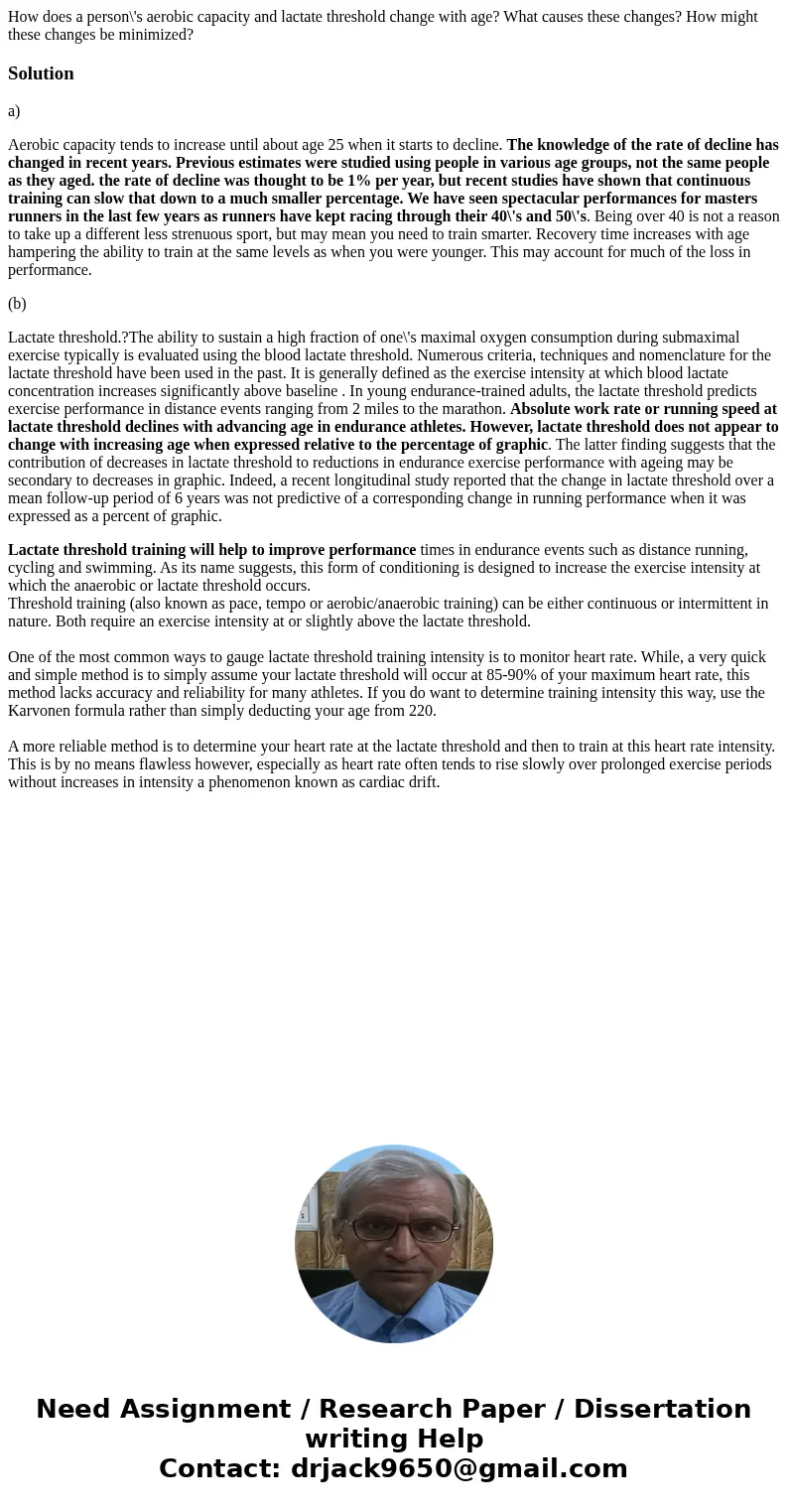How does a persons aerobic capacity and lactate threshold ch
How does a person\'s aerobic capacity and lactate threshold change with age? What causes these changes? How might these changes be minimized?
Solution
a)
Aerobic capacity tends to increase until about age 25 when it starts to decline. The knowledge of the rate of decline has changed in recent years. Previous estimates were studied using people in various age groups, not the same people as they aged. the rate of decline was thought to be 1% per year, but recent studies have shown that continuous training can slow that down to a much smaller percentage. We have seen spectacular performances for masters runners in the last few years as runners have kept racing through their 40\'s and 50\'s. Being over 40 is not a reason to take up a different less strenuous sport, but may mean you need to train smarter. Recovery time increases with age hampering the ability to train at the same levels as when you were younger. This may account for much of the loss in performance.
(b)
Lactate threshold.?The ability to sustain a high fraction of one\'s maximal oxygen consumption during submaximal exercise typically is evaluated using the blood lactate threshold. Numerous criteria, techniques and nomenclature for the lactate threshold have been used in the past. It is generally defined as the exercise intensity at which blood lactate concentration increases significantly above baseline . In young endurance-trained adults, the lactate threshold predicts exercise performance in distance events ranging from 2 miles to the marathon. Absolute work rate or running speed at lactate threshold declines with advancing age in endurance athletes. However, lactate threshold does not appear to change with increasing age when expressed relative to the percentage of graphic. The latter finding suggests that the contribution of decreases in lactate threshold to reductions in endurance exercise performance with ageing may be secondary to decreases in graphic. Indeed, a recent longitudinal study reported that the change in lactate threshold over a mean follow-up period of 6 years was not predictive of a corresponding change in running performance when it was expressed as a percent of graphic.
Lactate threshold training will help to improve performance times in endurance events such as distance running, cycling and swimming. As its name suggests, this form of conditioning is designed to increase the exercise intensity at which the anaerobic or lactate threshold occurs.
Threshold training (also known as pace, tempo or aerobic/anaerobic training) can be either continuous or intermittent in nature. Both require an exercise intensity at or slightly above the lactate threshold.
One of the most common ways to gauge lactate threshold training intensity is to monitor heart rate. While, a very quick and simple method is to simply assume your lactate threshold will occur at 85-90% of your maximum heart rate, this method lacks accuracy and reliability for many athletes. If you do want to determine training intensity this way, use the Karvonen formula rather than simply deducting your age from 220.
A more reliable method is to determine your heart rate at the lactate threshold and then to train at this heart rate intensity. This is by no means flawless however, especially as heart rate often tends to rise slowly over prolonged exercise periods without increases in intensity a phenomenon known as cardiac drift.

 Homework Sourse
Homework Sourse